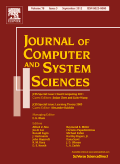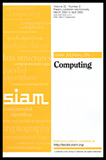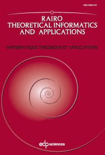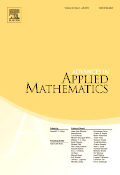
Journal of Membrane Computing
Scope & Guideline
Elevating Research Standards in Membrane Computing
Introduction
Aims and Scopes
- Membrane Computing Models and Theories:
The journal publishes research on various membrane computing models, such as P systems, spiking neural P systems, and tissue-like P systems, exploring their theoretical foundations and computational capabilities. - Applications in Optimization and Artificial Intelligence:
Research focusing on the application of membrane computing in optimization problems, including multi-objective optimization and machine learning algorithms, is a significant area of interest. - Biological and Biomedical Applications:
The journal includes studies that leverage membrane computing for biological modeling and medical applications, such as cancer prognosis and image analysis, showcasing the interdisciplinary nature of the field. - Cybersecurity and Network Systems:
Papers addressing the utilization of membrane computing techniques in cybersecurity, network traffic prediction, and fault diagnosis highlight the practical implications of these computational models in real-world scenarios. - Theoretical Advances and Computational Complexity:
Contributions that delve into the complexity of membrane computing systems, including studies on computational completeness and universality, are central to the journal's scholarly focus.
Trending and Emerging
- Integration with Machine Learning and AI:
There is a notable trend towards integrating membrane computing with machine learning and artificial intelligence techniques, as evidenced by papers focused on spiking neural networks for optimization and predictive modeling. - Bioinformatics and Medical Applications:
The journal increasingly emphasizes applications of membrane computing in bioinformatics and medical fields, such as cancer prognosis and medical image analysis, reflecting a growing interest in healthcare solutions. - Cybersecurity Innovations:
Emerging themes in cybersecurity, particularly the application of spiking neural P systems for threat detection and response strategies, indicate a rising focus on securing digital infrastructures. - Interdisciplinary Approaches:
Research that bridges membrane computing with other disciplines, such as energy systems and environmental modeling, is gaining traction, showcasing the versatility and applicability of membrane computing techniques. - Advanced Optimization Techniques:
There is a growing interest in advanced optimization methods, particularly those that employ evolutionary algorithms and surrogate-assisted techniques, to tackle complex optimization problems effectively.
Declining or Waning
- Basic Theoretical Constructs:
There seems to be a reduced focus on foundational theoretical constructs of membrane computing, as more research gravitates towards practical applications and complex systems modeling. - Simple Algorithmic Approaches:
The journal has seen a decline in the publication of papers that propose basic algorithmic approaches without significant advancements or novel insights, as the field evolves towards more sophisticated methodologies. - General Surveys on Established Topics:
The frequency of general survey papers on well-established topics in membrane computing has decreased, suggesting a shift towards more specialized and cutting-edge research areas.
Similar Journals

JOURNAL OF COMPUTER AND SYSTEM SCIENCES
Championing cutting-edge research in computational theory.The Journal of Computer and System Sciences is a distinguished publication founded in 1967 and continually striving to push the boundaries of knowledge in computer science and applied mathematics. Published by Academic Press Inc, Elsevier Science, this journal boasts impressive credentials, holding a Q1 quartile ranking across multiple categories including Applied Mathematics, Computational Theory and Mathematics, Computer Networks and Communications, and Theoretical Computer Science as of 2023. With a focus on innovative research and comprehensive theoretical developments, this journal serves as a pivotal forum for authors and readers alike, facilitating cutting-edge contributions to the field. The journal is not currently open access, providing a curated selection of high-quality articles for its subscription residents. By engaging with this journal, researchers, professionals, and students can gain insight into the latest trends, prominent methodologies, and significant findings that shape the modern landscape of computing and systems analysis.

SIAM JOURNAL ON COMPUTING
Shaping Tomorrow’s Innovations in Computer Science and Mathematics.Welcome to the SIAM Journal on Computing, a premier publication of SIAM Publications dedicated to advancing the field of computational science. Established in 1984, this journal provides a platform for groundbreaking research and theoretical advancements that shape the landscape of both Computer Science and Mathematics. With an impressive impact factor and consistently ranking in Q1 quartiles for its categories, the journal remains an essential resource for scholars looking to contribute to innovative computational theories and methodologies. Although not currently an open-access journal, the SIAM Journal on Computing offers rigorous peer-reviewed articles, ensuring high-quality contributions that appeal to researchers, professionals, and students alike. As we converge towards 2024, this journal continues to play a vital role in influencing future research directions and fostering an academic community devoted to the exploration of computational challenges. Join us in exploring the forefront of computing research!

JOURNAL OF COMPLEXITY
Decoding the Dynamics of Complex SystemsJOURNAL OF COMPLEXITY, published by Academic Press Inc. Elsevier Science, is a prestigious academic journal that has been at the forefront of advancements in the field of complexity science since its inception in 1985. With an ISSN of 0885-064X and an E-ISSN of 1090-2708, this journal is recognized for its impactful contributions across a range of mathematical disciplines, evidenced by its Q1 quartile rankings in Algebra and Number Theory, Applied Mathematics, Control and Optimization, Numerical Analysis, Statistics and Probability, and more. Positioned within the top echelons of Scopus rankings, it boasts notable standing—ranking #6 in Algebra and Number Theory and #25 in Numerical Analysis. Researchers, professionals, and students will find the journal's rigorously peer-reviewed articles invaluable for exploring the intricate relationships and phenomena that characterize complex systems. Although not an open-access journal, the insights offered are essential for expanding knowledge in mathematical frameworks and their applications in real-world problems. With a converged publication timeline extending to 2025, the journal is poised to continue shaping the discourse in complexity studies for years to come.

THEORY OF COMPUTING SYSTEMS
Exploring the Foundations of Computational InnovationTHEORY OF COMPUTING SYSTEMS, published by SPRINGER, is a renowned journal that has been a cornerstone in the fields of computational theory and theoretical computer science since its inception in 1996. With an ISSN of 1432-4350 and an E-ISSN of 1433-0490, this journal is committed to disseminating high-quality research that explores the underlying principles of computing systems and their theoretical foundations. Positioned in the Q2 category for both Computational Theory and Mathematics and Theoretical Computer Science, it plays a vital role in advancing scholarly dialogue and innovation within these disciplines, as evidenced by its rankings within the Scopus index. Researchers and professionals can access this journal in various formats, ensuring that cutting-edge research is readily available for a global audience. With a clear focus on fostering interdisciplinary collaboration and exploring emerging trends, THEORY OF COMPUTING SYSTEMS is essential reading for anyone interested in the evolution of computing theory and its applications.

JOURNAL OF COMPUTATIONAL MATHEMATICS
Advancing the Frontiers of Computational MathematicsJOURNAL OF COMPUTATIONAL MATHEMATICS, published by GLOBAL SCIENCE PRESS, is a distinguished peer-reviewed academic journal dedicated to advancing the field of computational mathematics. With a focus on high-quality research that bridges theoretical and practical applications, this journal aims to disseminate innovative methodologies and robust algorithms that address complex mathematical problems. Operating without an open-access model, it maintains a reputable standing with a Q2 category classification in computational mathematics as of 2023, showcasing its influence and relevance within the academic community. The journal, which has been in publication since 1996, continues to evolve, providing a platform for researchers, practitioners, and students to engage with cutting-edge developments up to 2024. By contributing to the body of knowledge in computational mathematics, this journal plays a vital role in fostering collaboration and advancement in related disciplines.

Mathematical Foundations of Computing
Innovating the Future through Mathematical FoundationsMathematical Foundations of Computing, published by the American Institute of Mathematical Sciences (AIMS), is a distinguished open-access journal that has been actively disseminating influential research in the fields of Artificial Intelligence, Computational Mathematics, Computational Theory and Mathematics, and Theoretical Computer Science since its inception in 2009. With its E-ISSN 2577-8838, this journal is committed to providing researchers and practitioners with cutting-edge mathematical theories and methodologies that underpin modern computational practices, which is critical for advancing the field. The journal proudly holds a Q3 categorization in several relevant domains as of 2023, reflecting its contribution and accessibility amid an evolving academic landscape. By offering open access to its content, it ensures that vital research is freely available to a global audience, enhancing collaboration and innovation. Positioned in the heart of the United States, Mathematical Foundations of Computing serves as a crucial resource for advancing knowledge and fostering discussions among researchers, professionals, and students passionate about the mathematical underpinnings of computing.

RAIRO-THEORETICAL INFORMATICS AND APPLICATIONS
Bridging Theory and Application in Informatics.RAIRO - Theoretical Informatics and Applications is a renowned academic journal published by EDP Sciences S A that has been at the forefront of disseminating innovative research and applications in the fields of computer science and mathematics since its inception in 1995. With a focus on theoretical and applied aspects of informatics, the journal serves as a vital resource for researchers and professionals seeking to explore the intricacies of computational theories and their practical applications. Although currently lacking an Open Access model, it provides invaluable insights from distinguished researchers within its Q4 category rankings across its pertinent fields. As reflected in its Scopus rankings, including a position in the 24th percentile for General Mathematics and the 9th percentile for Computer Science Applications, RAIRO is pivotal in contributing to the ongoing discourse and advancements in theoretical informatics. Researchers, professionals, and students will find this journal critical in understanding emerging trends and challenges in the rapidly evolving domains of computer science and mathematics.

International Journal of Mathematics and Computer Science
Fostering Excellence in Mathematical and Computational ResearchThe International Journal of Mathematics and Computer Science (ISSN: 1814-0424, E-ISSN: 1814-0432), published by Lebanese University, serves as a vital platform for disseminating innovative research and advancements in the fields of mathematics and computer science. With a compelling range of topics including Algebra, Applied Mathematics, Computational Mathematics, and Statistical Analysis, this journal caters to a broad audience of researchers, professionals, and students. Spanning the years from 2017 to 2025, it has established a presence in several key quartiles, including Q3 rankings in Applied Mathematics and Computational Mathematics, and a Q4 ranking in Algebra and Number Theory. While currently not an open-access journal, it provides valuable insights through its rigorous peer-reviewed process, enhancing its relevance in both theoretical and applied domains. Furthermore, its presence in Scopus rankings reflects its commitment to quality, making it an essential resource for anyone looking to explore the intersection of mathematics and computer science.

Applied and Computational Mathematics
Transforming Ideas into Solutions: The Heart of Applied MathematicsApplied and Computational Mathematics is a premier journal dedicated to the dissemination of innovative research in the fields of applied mathematics and computational mathematics. Published by the MINISTRY COMMUNICATIONS & HIGH TECHNOLOGIES REPUBLIC AZERBAIJAN, this journal offers a prominent platform for scholars and practitioners worldwide, boasting an impressive Q1 category ranking in applied mathematics and Q2 in computational mathematics for 2023. With an excellent Scopus ranking placing it in the 96th percentile for both categories, it highlights the high quality and global impact of its published work. The journal spans a wide range of topics, ensuring it remains relevant to current and emerging trends in both theoretical and applied contexts. Access to its articles is streamlined through open channels, promoting collaboration and knowledge sharing among researchers. Applied and Computational Mathematics is pivotal for advancing the discipline and supporting the academic community's growth, making it an essential resource for researchers, professionals, and students alike.

ADVANCES IN APPLIED MATHEMATICS
Fostering Insightful Research for Real-World ImpactADVANCES IN APPLIED MATHEMATICS, published by ACADEMIC PRESS INC ELSEVIER SCIENCE, is a prestigious journal that has served the mathematical community since 1980. With its ISSN 0196-8858 and E-ISSN 1090-2074, the journal is based in the United States, specifically in San Diego, CA. As a leading periodical in the field, it holds a notable Q2 ranking in Applied Mathematics and has been consistently ranked in the 43rd percentile among similar journals, illustrating its relevance and impact within the discipline. Although not an Open Access journal, ADVANCES IN APPLIED MATHEMATICS plays a crucial role in disseminating significant research findings, theoretical studies, and innovative applications of mathematics that address real-world problems. Researchers, professionals, and students alike will find valuable insights in its carefully curated publications, making it an essential resource for those looking to advance their understanding and application of mathematics.